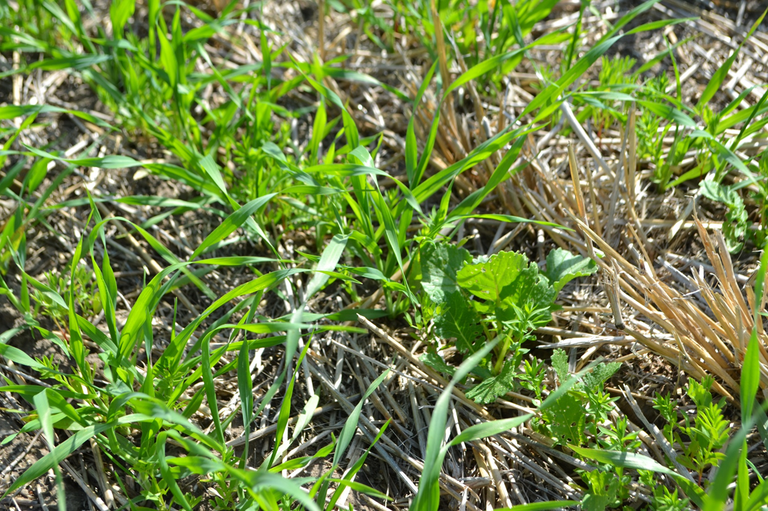Timing of Cover Crop Establishment - Revisited
Interest in planting cover crops has increased greatly the past few years in North Dakota. Traditionally seeded after a small grain crop, ND’s short growing season can limit successful establishment. Most years, moisture for germination is available for only 1-2 days after harvesting the small grain crop.
Seeding later than this short window delays cover crop germination until the next adequate rainfall event, sometimes days or weeks after harvest. Any delay drastically reduces biomass produced by the cover crop. Combining and seeding at the same time can be challenging for most operations when labor is in short supply.
This led us to ask the questions:
- Where are the opportunities within the growing season to successfully establish the cover crop
- Without impacting grain yield of the cash crop
- Without significantly increasing production costs
We conducted a trial that was replicated at several other NDSU Research Extension Centers during the 2015-2018 growing seasons.
The treatments:
- Check (no cover crop seeded)
- At seeding with the drill down the same seed tubes as the barley
- Broadcast cover seed at 4-5 leaf-stage barley (herbicide application timing)
- Broadcast cover seed at anthesis (fungicide application timing)
- Drill seed after harvest (traditional timing and method)
Below are the combined results from the three locations that were not severely impacted by drought (produced a harvestable grain crop): Carrington, Langdon, and North Central REC’s
- The take homes from this trial are that only one location, one year, out of 12 site-years had a negative impact on the barley crop.
- The at-seeding and 4-5 leaf cover crop establishment timings produce significantly more biomass than the traditional after-harvest establishment.
Barley and cover crop performance.
Below are the combined results for the test crop of HRSW the following year on the described treatments above. There was no fertilizer applied to determine any impact based on the cover crop treatment. Ultimately, there were no differences across all years and locations.
Hard red spring wheat performance.
Based on the results from this trial, we are now moving forward with a few trials:
- Two trials investigating the moisture requirements to get some common cover crops species to germinate and establish.
- One trial looking at how much we need to reduce our wheat grain crop seeding rate to successfully produce more cover crop biomass at the same timings as the trial in this article
 Emerging barley interseeded with cover crop at seeding at the NDSU Carrington Research Extension Center.
Emerging barley interseeded with cover crop at seeding at the NDSU Carrington Research Extension Center.
Ezra Aberle
Ezra.Aberle@ndsu.edu
Research Specialist


